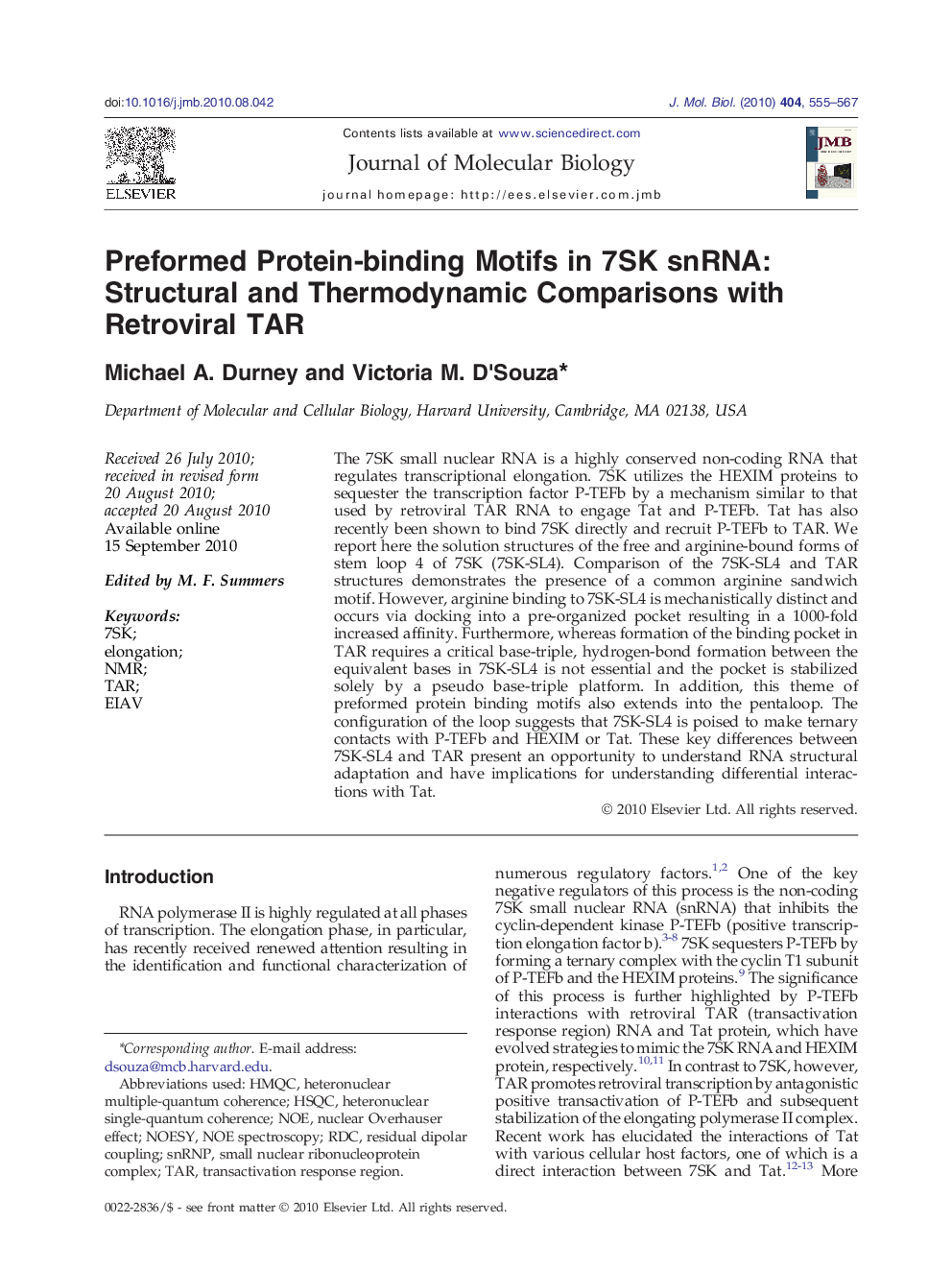| Article ID | Journal | Published Year | Pages | File Type |
|---|---|---|---|---|
| 2185507 | Journal of Molecular Biology | 2010 | 13 Pages |
The 7SK small nuclear RNA is a highly conserved non-coding RNA that regulates transcriptional elongation. 7SK utilizes the HEXIM proteins to sequester the transcription factor P-TEFb by a mechanism similar to that used by retroviral TAR RNA to engage Tat and P-TEFb. Tat has also recently been shown to bind 7SK directly and recruit P-TEFb to TAR. We report here the solution structures of the free and arginine-bound forms of stem loop 4 of 7SK (7SK-SL4). Comparison of the 7SK-SL4 and TAR structures demonstrates the presence of a common arginine sandwich motif. However, arginine binding to 7SK-SL4 is mechanistically distinct and occurs via docking into a pre-organized pocket resulting in a 1000-fold increased affinity. Furthermore, whereas formation of the binding pocket in TAR requires a critical base-triple, hydrogen-bond formation between the equivalent bases in 7SK-SL4 is not essential and the pocket is stabilized solely by a pseudo base-triple platform. In addition, this theme of preformed protein binding motifs also extends into the pentaloop. The configuration of the loop suggests that 7SK-SL4 is poised to make ternary contacts with P-TEFb and HEXIM or Tat. These key differences between 7SK-SL4 and TAR present an opportunity to understand RNA structural adaptation and have implications for understanding differential interactions with Tat.
Research highlights► The first high-resolution structural data for the key regulatory 7SK snRNA. ► The RNA is preformed leading to a high-affinity interaction with arginine. ► 7SK does not require base-triple formation unlike retroviral TAR.
